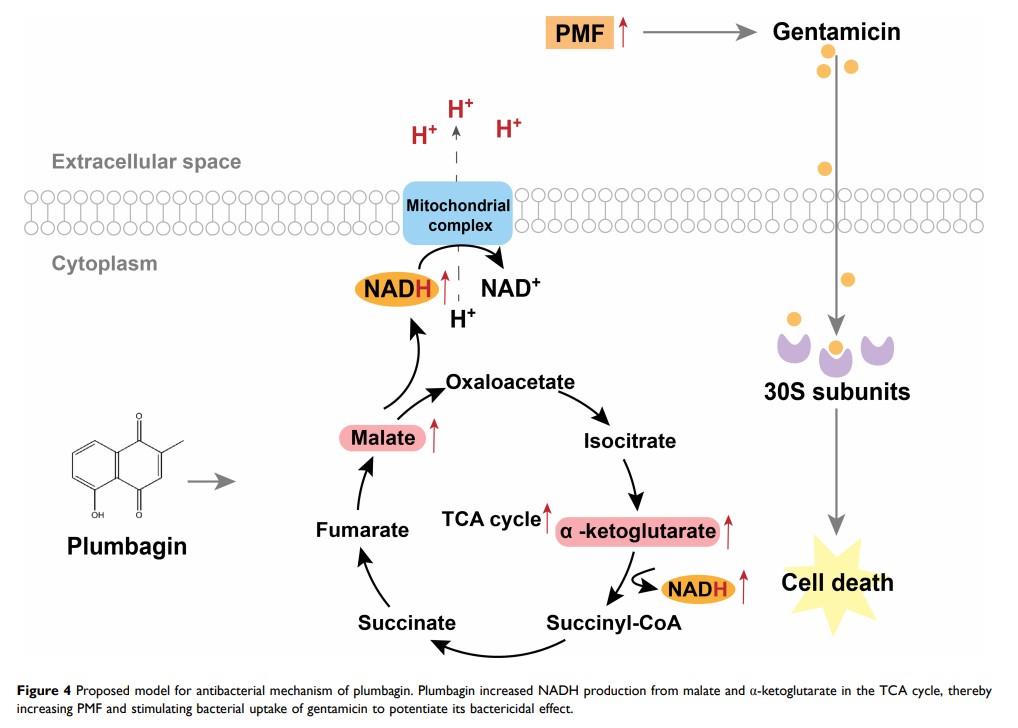108384
论文已发表
注册即可获取德孚的最新动态
IF 收录期刊
- 3.4 Breast Cancer (Dove Med Press)
- 3.2 Clin Epidemiol
- 2.6 Cancer Manag Res
- 2.9 Infect Drug Resist
- 3.7 Clin Interv Aging
- 5.1 Drug Des Dev Ther
- 3.1 Int J Chronic Obstr
- 6.6 Int J Nanomed
- 2.6 Int J Women's Health
- 2.9 Neuropsych Dis Treat
- 2.8 OncoTargets Ther
- 2.0 Patient Prefer Adher
- 2.2 Ther Clin Risk Manag
- 2.5 J Pain Res
- 3.0 Diabet Metab Synd Ob
- 3.2 Psychol Res Behav Ma
- 3.4 Nat Sci Sleep
- 1.8 Pharmgenomics Pers Med
- 2.0 Risk Manag Healthc Policy
- 4.1 J Inflamm Res
- 2.0 Int J Gen Med
- 3.4 J Hepatocell Carcinoma
- 3.0 J Asthma Allergy
- 2.2 Clin Cosmet Investig Dermatol
- 2.4 J Multidiscip Healthc

白花丹素与庆大霉素对碳青霉烯耐药肺炎克雷伯菌的协同作用及机制
Authors Chen X, Yin L, Peng L, Liang Y, Lv H, Ma T
Received 10 June 2020
Accepted for publication 24 July 2020
Published 7 August 2020 Volume 2020:13 Pages 2751—2759
DOI https://doi.org/10.2147/IDR.S265753
Checked for plagiarism Yes
Review by Single anonymous peer review
Peer reviewer comments 2
Editor who approved publication: Dr Sahil Khanna
Background: Aminoglycosides are one of a few susceptible antimicrobials available for carbapenem-resistant Enterobacteriaceae (CRE). However, the altered pharmacokinetics and increasing drug resistance of aminoglycosides will make them hardly effective if used in monotherapy. The purpose of this study was to identify herbal compounds that potentiate the antibacterial effect of gentamicin against carbapenem-resistant Klebsiella pneumoniae (CRKp) with gentamicin resistance and explore the action mechanisms.
Methods: A collection of 280 Chinese herbal compounds was screened for synergistic effect with gentamicin against CRKp by broth microdilution method according to the standard of the Clinical and Laboratory Standards Institute (CLSI). Intracellular gentamicin was measured by liquid chromatography-tandem mass spectrometry (LC-MS/MS). The membrane potential was evaluated by Bac LightTM Bacterial Membrane Potential Kit. Plumbagin-induced metabolite changes of vital metabolic pathways were measured by an optimized untargeted metabolomics method based on gas chromatography-mass spectrometer (GC/MS). Intracellular nicotinamide adenine dinucleotide (NADH) was detected via EnzyChrom NAD/NADH assay kit.
Results: We identified plumbagin to remarkably potentiate the antimicrobial activity of gentamicin against the CRKp with gentamicin resistance. Plumbagin at 100 μM could bring the MIC of gentamicin from > 16 μg/mL to ∼ 4 μg/mL despite its minimal inhibitory effect on the CRKp. A similar synergistic effect with gentamicin was also observed in an antibiotics-susceptible strain of Klebsiella pneumoniae . Compared with gentamicin monotreatment, the combination group showed a higher intracellular concentration of gentamicin and increased membrane potential in CRKp. Metabolomics analysis indicated remarkable increases of malate and α-ketoglutarate in the tricarboxylic acid (TCA) cycle in the CRKp upon plumbagin treatment. Further analysis revealed higher intracellular NADH concentration in plumbagin-treated CRKp, supporting increased proton-motive force (PMF) that facilitates aminoglycosides uptake.
Conclusion: Herbal compound plumbagin was identified to stimulate gentamicin uptake by CRKp via enhancing TCA efflux and PMF to achieve a synergistic antibacterial effect. Plumbagin may be used in combination with aminoglycosides for severe CRKp infection by potentiating their therapeutic efficacy and lowering dosage.
Keywords: drug-resistant Enterobacteriaceae , aminoglycosides, Chinese herbal compounds, potentiation mechanism
